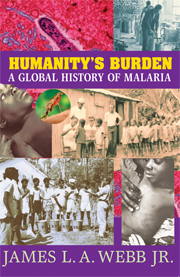4 - Bitter Medicines
Published online by Cambridge University Press: 05 March 2015
Summary
Early European immigrants looked on the Americas as a vast botanical storehouse of useful natural products – particularly dyestuffs, stimulants, and medicines. Early Portuguese explorers in South America traded for wood from a rainforest tree (Caesalpinia echinata) that, when boiled, yielded a prized reddish-purple dye very similar to that from the heartwood of a closely related Asian tree (Caesalpinia sappan) known in Europe through long-distance trade. The South American tree became known as brazilwood and lent its name to the Portuguese colony. The Spaniards followed with their own “discovery.” In the course of their military expeditions into Mexico, the Spaniards learned the source of the brilliant red that decorated the Aztec garments. In the postconquest centuries, the Spaniards encouraged the indigenous farmers to produce large quantities of the insects (Dactylopius coccus) that fed from the prickly pear cactus and then crushed the insects to yield a dye known as cochineal that, like brazilwood, dazzled the European visual palate.
Europeans also hit a bonanza in their search for stimulants. Indigenous peoples in parts of North America, South America, and the Caribbean smoked tobacco. Europeans, Africans, and Asians soon enthusiastically took up the smoking habit and launched tobacco on an extraordinary, global career. Over time hundreds of millions of people on all continents became addicted. Other powerful and addictive stimulants remained for centuries within the orbit of their original New World societies. Amazonian and Andean peoples chewed coca leaves to produce mild euphoria and greater power of endurance.
- Type
- Chapter
- Information
- Humanity's BurdenA Global History of Malaria, pp. 92 - 126Publisher: Cambridge University PressPrint publication year: 2008



